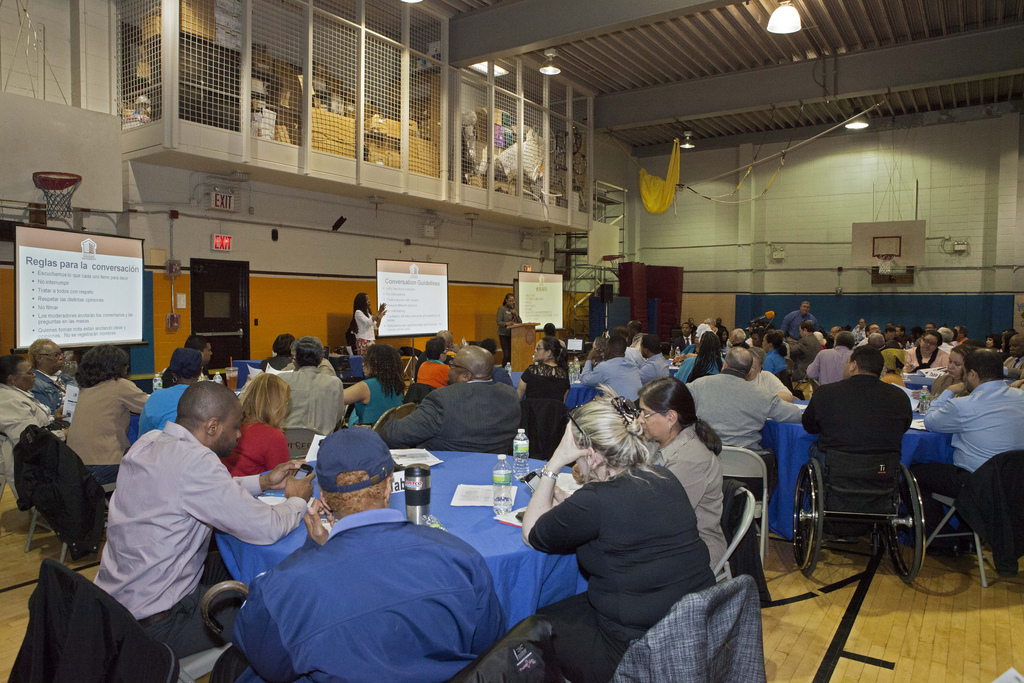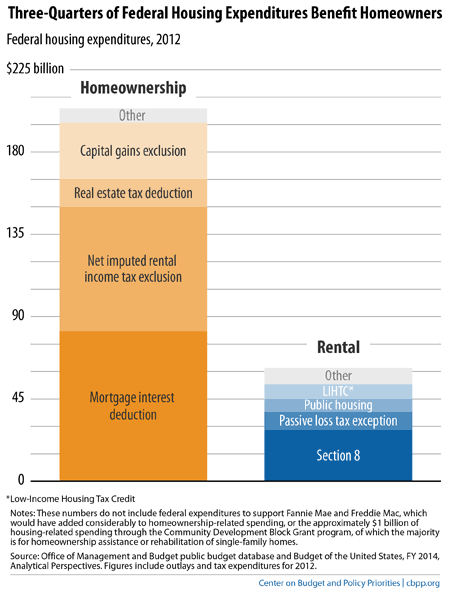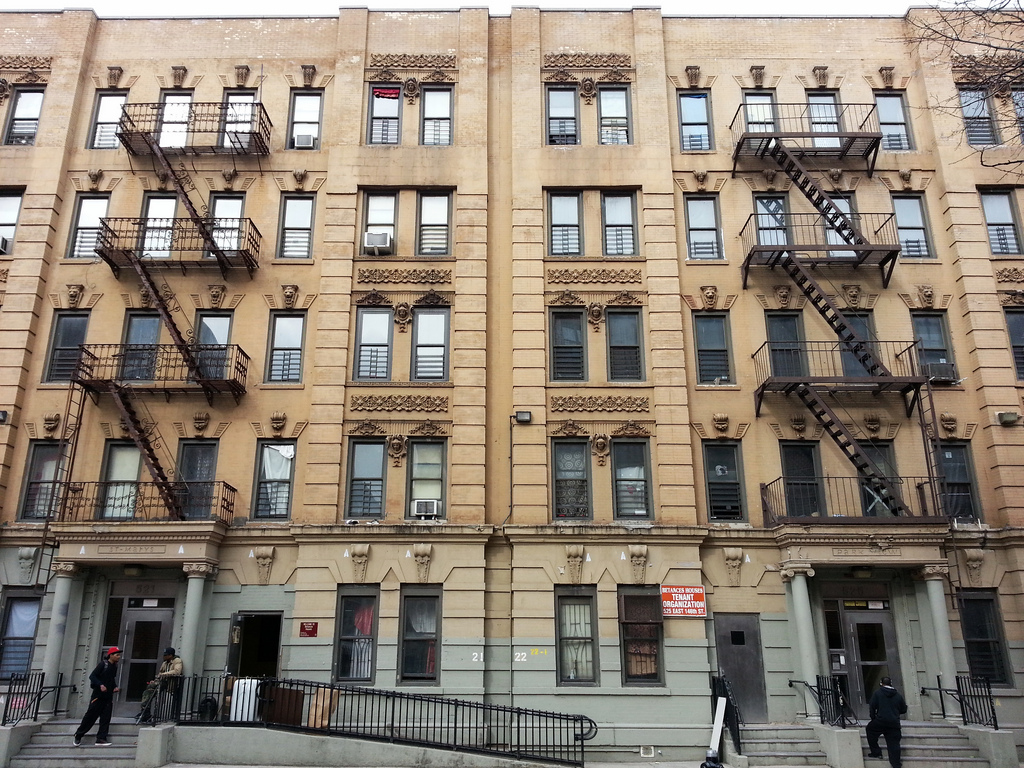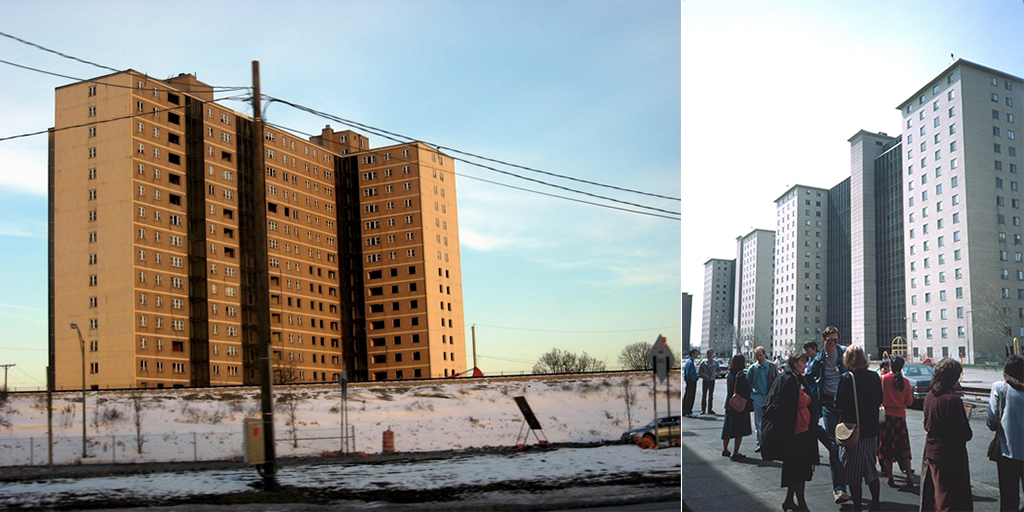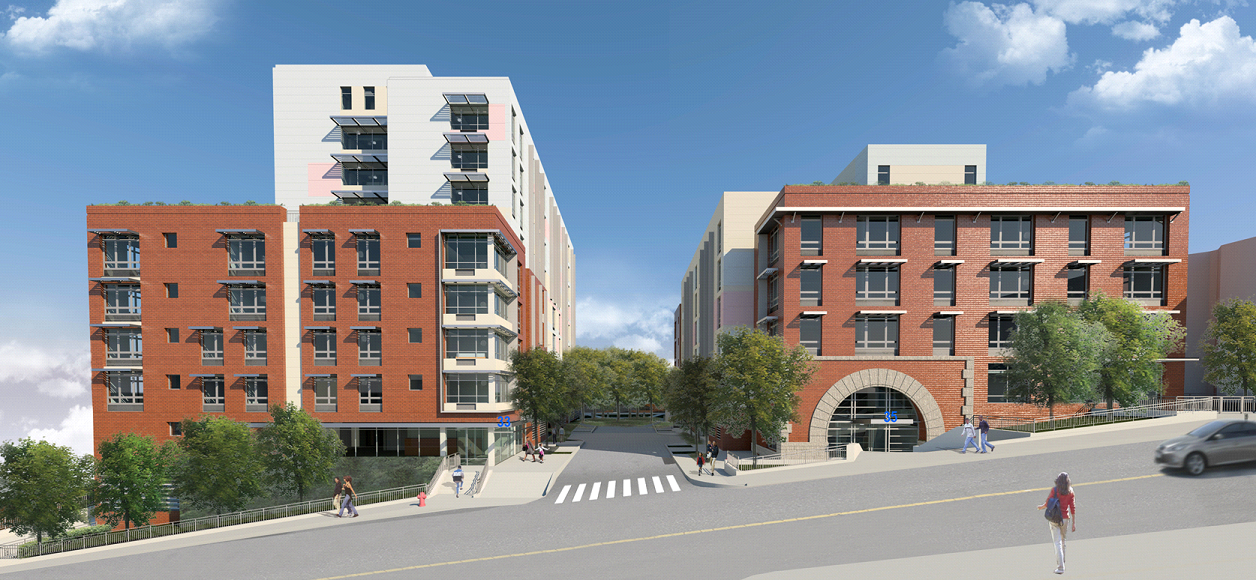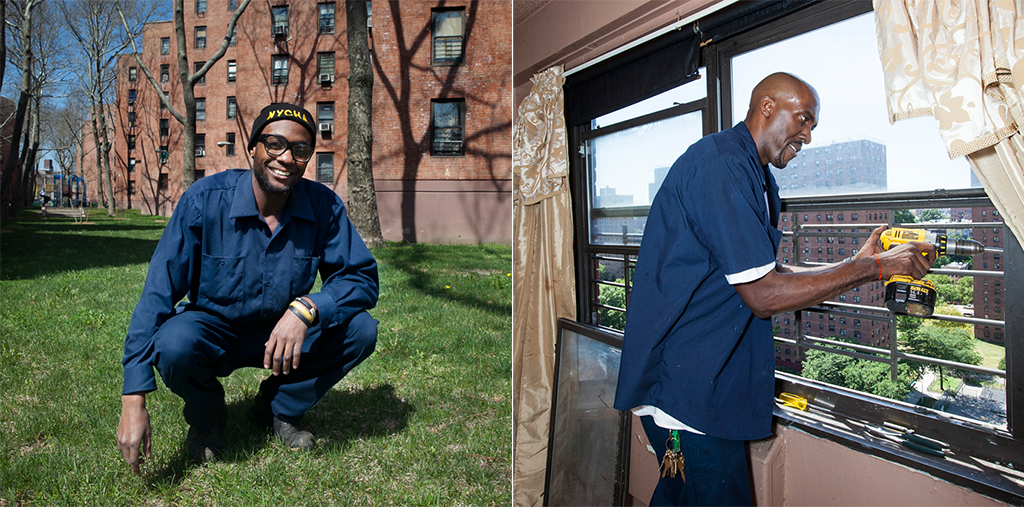
We are celebrating 15 years — and counting — of stories that are deeply researched and deeply felt, that build a historical record of what the city has been.
We are celebrating 15 years — and counting — of stories that are deeply researched and deeply felt, that build a historical record of what the city has been.
In the face of years of disinvestment, an aging housing stock with a backlog of maintenance needs, and a controversial plan to develop new properties within public housing campuses, the New York City Housing Authority (NYCHA) is at a crossroads. More than 400,000 people, nearly 5% of the city’s population, live in NYCHA’s 334 public housing developments (not including those served by NYCHA through Section 8 rental assistance), and another 250,000 families are on the waiting list. As federal funding for public housing continues to diminish, Mayor de Blasio has included a “total reset” of public housing as a crucial component of his plans to expand affordable housing and address inequality during his administration. At a time of both significant challenges and potential opportunity for change, residents, housing advocates, and policymakers are contemplating what we need to do to maintain and improve this vital public asset.
Joseph Shuldiner has a long and esteemed career in housing. He started out working as a legal aid lawyer in the Bronx with a focus on tenants rights cases. He worked for the NYC Department of Housing Preservation and Development (HPD) for sixteen years in a number of capacities before moving on to the New York City Housing Authority (NYCHA) in 1986, where he served as General Manager. He then moved on to run the Los Angeles Housing Authority before being appointed by President Clinton as Assistant Secretary of Public and Indian Housing at the US Department of Housing and Urban Development (HUD) in 1993. In 1995, when the federal government took over the Chicago Housing Authority (CHA), widely understood at the time to be one of the nation’s most troubled housing authorities, Shuldiner was selected to spearhead the HUD efforts to transform the agency. In four years, he overhauled the CHA’s fiscal and management practices, removing it from HUD’s troubled agency list. Currently, Shuldiner is the executive director of the Yonkers Municipal Housing Authority — a housing authority with its own heated history. With his combined experience at the federal and local levels, and as the only person to have managed housing authorities for all three of the nation’s largest cities, Shuldiner has a unique and invaluable perspective on what it takes to make public housing work. Last month, he sat down with Rosalie Genevro, The Architectural League’s executive director, to discuss the challenges and future of public housing. –V.S.
Though you’ve worked in housing for years, you started out as a legal aid lawyer. Why did you choose to go into and stay with public housing?
I didn’t have a grand plan. I haven’t yet met anyone who wants to be the executive director of a housing authority when he grows up. I started out in legal services, doing mostly landlord tenant work in the Bronx. In 1973, the NYC Department of Housing Preservation and Development (HPD) hired me to do code enforcement. For ten years I was a litigator, I headed the Bronx unit, and became Deputy Director of the Litigation Bureau, and then got promoted and haven’t done anything legal since.
Public housing is a good world. In city government, you are supposed to represent everybody, but in practice those with the greatest resources get more attention. Public housing is one of the only city agencies that represents just lower-income people. I like working in public housing, particularly on the local level, working with tenants, because you can see the impact you have. Once you build a building, it’s there, you can see it.
Once you moved into administration and operations, what changes have you seen in public housing over time and between the different cities in which you worked?
Well, the role of a housing authority has changed. In the past, it was okay just to provide safe, decent, and affordable housing. But realistically, now, in most places, authorities also have to prioritize community building. And if you’re building a community, you don’t really want standalone public housing.
In present circumstances, when authorities build standalone public housing, you’re constructing buildings that are occupied exclusively by low-income people; you’re creating concentrations of poverty by definition. Unless the public housing program can be flexible enough to allow mixed income, it will be counter-productive. To me, it’s not about a unit count, it’s about a unit count in viable communities. If you’re building crap in a bad neighborhood, those units don’t count. Ideally, if you were building a city from scratch, you wouldn’t put the very low income here, the low income somewhere else, and the moderate, middle, and upper incomes another place altogether. You’d build some multi-family here, some single-family there, and you’d try to integrate it ethnically and economically as best you could.
And we’re certainly seeing a shift from traditional public housing toward other strategies of subsidizing housing. Yet, on a dollar for dollar basis, isn’t it more economically efficient for the public sector to build and operate housing rather than providing tax credits or other subsidies?
If you’re asking if it’s cheaper, it is cheaper. The average cost to the government to provide a unit of public housing is 22% less than the cost of issuing that household a voucher. This is the big fight right now. The federal Department of Housing and Urban Development (HUD) is trying to end their funding of public housing operations and convert their support to providing vouchers. But HUD wants to give housing authorities contracts at the present funding level, not at the level housing authorities would get in a voucher program like Section 8. HUD simply doesn’t have the money to make up the difference. It would cost at least another billion dollars to convert the remaining public housing units to vouchers at their market value.
But when you’re talking about new construction, building for us is much more expensive than it is for the private sector. And a lot of the extra costs are because of regulations: public housing authorities have to comply with Davis-Bacon, we mostly have to use union labor, we have to meet criteria from HUD and any other funding source; all of these things add up. In Yonkers, we’re paying $450,000 per unit to build, NYCHA is probably paying more. It would be so much cheaper to just go out and buy houses for people. We did that in Los Angeles — the level of disinvestment after the riots meant the banks didn’t want to be carrying the property. We went to the bank and said, we won’t give you a dime, but we’ll assume the mortgage. In that way, the housing authority picked up 500 units of housing for nothing.
It seems that public opinion considers expenditures on public housing in a very limited way.
Now we’re talking politics, not housing. President Reagan convinced the public that the middle class was dwindling because the poor were ripping them off, rather than the rich ripping them off. The mortgage interest deduction is the single largest housing program we have. The second largest is the real estate tax deduction, and the third largest is the fact that that if you’re over 55 you don’t pay capital gains when you sell your house. Or if you sell your house and move to a larger house you don’t pay capital gains. Those are the three largest deductions and together they’re four times the entire HUD budget.
It seems like it would be far more efficient if we combined all of those subsidies together and created a single one dedicated to helping people secure housing. But really the existing system was set up to undergird the construction industry. It’s been that way since the Great Depression.
Right. The 1937 Housing Act was an employment act, it wasn’t a housing act.
In your work with public housing authorities in New York, Los Angeles, Chicago and now Yonkers, you’ve seen a range of approaches to architectural form when it comes to public housing. Is there significance to certain forms of buildings, or is management really the key?
I don’t think high rises are inherently bad things. Ideally, you’d want a typological mix. But if you have to house 10,000 people, you can build Levittown, or you can build a nice high rise. Certainly the density is a lot more functional.
The Betances Houses in the South Bronx are a scattered site development of renovated existing buildings, which now have a very serious problem with the safety of their public space. Coming from an architectural background, it’s really sobering and humbling to go look at them because they were designed using all the best ideas of the time about defensible space, but a lot of mistakes were made and now they are less safe and less desirable than the more typical high-rise NYCHA projects that were built earlier. Marcus Garvey Village in Brooklyn has been touted in architecture schools for decades, but apparently now is the most dangerous housing in Brownsville, where you have a huge concentration of high-rise housing.
You build with the best ideas of the time, but times change, ideas change, people change. I don’t know that there is an ideal form. You have to make something to a standard that a person with options will choose. That was always my litmus test. That said, architecture can do something. It can make maintenance easier, it can help with energy conservation, with safety. Though I don’t know if there’s anything design can do if the residents don’t care. The residents have to be proud of and participate in their environment.
In that sense, I think community input is crucial: letting the community participate in the plan, letting them own it. For example, when I was in Los Angeles, we were going to take down a 400-unit development on 23 acres of land, a wood building with a termite problem, constructed during the war as temporary housing. We talked with the residents and learned, of course, that everybody wanted a one-family house on an acre of land. But they also wanted everybody to come back once the project was redeveloped and they understood that in order to get 400 units to fit on 23 acres of land, you needed to accept a certain kind of design.
In 1998, I was in Chicago when the federal government passed the Quality Housing and Work Responsibility Act (QHWRA), which basically mandated that every development of 300 units or more required a viability test comparing what it would cost to upgrade the property and run it for 20 years to what it would cost to give everybody a voucher for 20 years. And if it was cheaper to issue a voucher, then the public housing authority had to close the development. Well, what a shocker, all the multi-family developments in Chicago failed. So we went to the residents and asked them again to participate. We offered every tenant resident council $50,000 to hire a planner and devise its own plan. And through that process of working with an architect or planner, they came to their own conclusions that they needed to tear down these failing buildings and start all over again.
In your current role, how integrated is the work of the Yonkers Housing Authority with more general planning for development in the city?
It is becoming more integrated because I have insisted on it. What’s more, we were awarded a $300,000 Choice Neighborhoods grant from HUD in 2012 which requires the City to work closely with us. If your goal is just to provide safe, decent, and affordable housing, you can probably do that without being very integrated with city planning, but if your goal is to really help build viable communities, which I believe is our responsibility to do as a housing authority, then you absolutely need to work with the City.
Can you tell us a little about the Housing Authority Insurance (HAI) Group you helped to establish and some of the work you are doing with housing industry groups nationwide?
In 1986, I was at NYCHA, and the insurance market at that time was really difficult. 175 housing authorities in the country were without any liability insurance and others were paying an exorbitant amount. So along with 20 other housing authorities from the Council of Large Public Housing Authorities (CLPHA), NYCHA put up some money to do a study to see what our options were. The consultants came back with the recommendation that we create our own insurance company. As it turns out, the Liability Risk Retention Act of 1986 had just been passed, which said that, for liability insurance, if you can get your company approved in one state, you can sell the insurance in all states. So we decided to go forward and the HAI Group started writing coverage in 1987. NYCHA subsequently dropped out because it was much too large to be served by this company, but over time the membership has expanded to such an extent that HAI is providing coverage in some way or another for about half the units of public housing currently in the country.
The company is doing really well now, it has around half a billion dollars in assets, and it is able to continue reducing prices for authorities. But in November of 2011, the company had a strategic planning conference and there was a lot of concern about whether there would be any housing authorities left to insure in five to ten years, which is certainly a possibility. The company got really nervous, because insurance is in essence a legalized Ponzi scheme — once money stops coming in, it’s all over. So HAI essentially came out with three basic initiatives: one is to improve the image of public housing, a second is to create an industry accreditation system similar to colleges and hospitals, and the third is to get access to private capital for housing authorities.
Rethink Why Housing Matters is the media initiative to improve the public image of housing. The essential strategy of that project has been to talk about how important public housing is, first by showing that the people who live there are just like everyone else, and secondly, that public housing can have a positive impact for both the people that live in it and for the community at large. There are a series of videos on the site that help to tell stories of people who live or lived in public housing.
On the accreditation front, HAI has already written the standards, and we’re going to field test them in a couple of months. Eventually, we would like to see an accreditation system that will lend more respectability and professionalism to the whole industry. One of the problems has been that we’ve never been able to hold bad housing authorities accountable. This will allow us to do that.
And then the third initiative is to secure access to private capital for housing authorities. HUD did a study that basically reported a backlog of $26 billion in capital needs. And public housing authorities nationwide are accruing new capital needs at $3.4 billion a year. HUD doesn’t even ask the federal government for more than $2 billion in capital each year, so they know that they’re nowhere near able to maintain the system. HUD’s response, essentially, is to end the public housing program. Since Congress will not adequately fund the department, HUD launched the Rental Assistance Demonstration (RAD), which allows 60,000 public housing units to convert to rental-assistance Section 8 developments. Public housing is a property trust relationship, so the key shift with RAD is that those conversions remove units from that trust relationship, so PHAs can mortgage those properties and borrow private capital against them. Currently, HUD is seeking congressional approval to increase the size of the demonstration. I think once more than 200,000 units go through the conversion, public housing authorities all over the country are going to run to it.
So given this current state of public housing, where do you hope we’re headed? What are some of the successful ways that housing authorities are dealing with these pressures?
There are opportunities to innovate. There are good examples of authorities capitalizing on the flexibility of the Moving to Work program[1]. The Tacoma Washington Housing Authority decided they wanted to do community building, and the problem in their community was a failing school that had an extremely high rate of student turnover. The authority issued 50 housing vouchers to 50 families in this school, the deal being the family can move if they like, but in order to keep the voucher they have to keep their children in this school. The authority also insisted on an International Baccalaureate program to give the kids a track to get into specialized high schools. So just by providing 50 vouchers, the housing authority was able to upgrade and stabilize the school, which in turn upgrades and stabilizes the community.
More generally though, I really believe mixed-income developments are the way to go. You can’t build standalone public housing unless you’re going to allow a wider range of people, including those who don’t need any subsidy. You need a wider range of income groups and not, as some people argue, so that low-income people can have working role models, but exactly the other way around, so that the middle class can see that low-income people have the same values they do. The best way to undo the welfare stereotype is to have mixed-income housing.
I would argue that giving low-income people the opportunity to move into nicer neighborhoods is the wrong approach in the sense that the result is all the upwardly people leave the poorer neighborhood, which makes things worse. Why not make the bad neighborhood good enough to encourage upwardly people to move in? At the end of the day, the object is to build integrated communities everywhere — what is the program that gets you there?
Moving to Work (MTW) is a demonstration program for public housing authorities (PHAs) that provides them the opportunity to design and test innovative, locally-designed strategies that use Federal dollars more efficiently, help residents find employment and become self-sufficient, and increase housing choices for low-income families. MTW gives PHAs exemptions from many existing public housing and voucher rules and more flexibility with how they use their Federal funds. MTW PHAs are expected to use the opportunities presented by MTW to inform HUD about ways to better address local community needs.
The views expressed here are those of the authors only and do not reflect the position of The Architectural League of New York.

